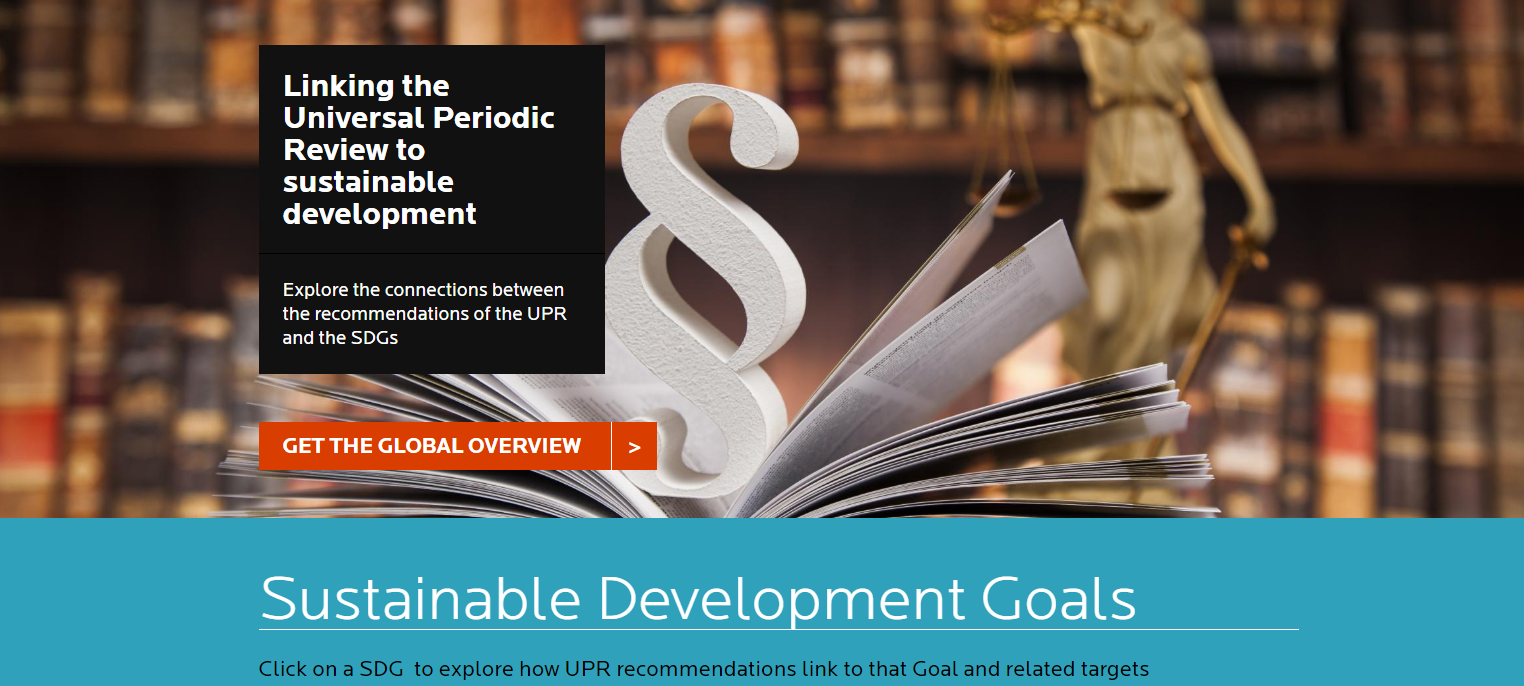The Danish Institute for Human Rights has just launched a new tool: UPR-SDG Data Explorer which allows users to explore how UPR recommendations for specific countries, regions or groups of rights-holders are linked to the 169 targets contained in the 17 Sustainable Development Goals.
The UPR-SDG Data Explorer is a searchable database that links recommendations from the Universal Periodic Review (UPR) to the 2030 Agenda for Sustainable Development.
It allows users to explore how UPR recommendations for specific countries, regions or groups of rights-holders are linked to the 169 targets contained in the 17 Sustainable Development Goals.
The UPR-SDG Data Explorer is the result of an experimental data mining project, where an algorithm has been trained to automatically identify links between UPR recommendations and SDG targets. You can read more about the methodology here.
How to use the UPR-SDG Data Explorer?
National implementation:
The UPR-SDG Data Explorer can be used to explore how UPR recommendations for individual countries are linked to the 169 SDG targets. The recommendations can then be used to:
Identify the salient human rights issues that need to be addressed in strategies to reach the SDGs;
Guide the strategies and actions to achieve the relevant SDG targets and related human rights obligations; and
Identify vulnerable groups such as migrant workers, indigenous peoples and persons with disabilities, who need special considerations in strategies and actions to achieve particular SDG targets and related human rights obligations.
Follow-up and Review at the global and regional level:
The UPR-SDG Data Explorer can be used to explore the links between UPR recommendations and SDGs at the global and regional level too. In this context the recommendations can be used to:
Provide an overview of global and regional salient human rights issues as they relate to the SDGs;
Identify global and regional human rights issues pertaining to particular groups of rights-holders, who require particular attention and considerations in SDG implementation;
Inform regional and global strategies and actions to achieve the SDGs and related human rights instruments; and
Identify global and regional trends and tendencies in human rights and sustainable development realization over time.
All data can be explored online as well as exported to pdf and csv formats.
See more at: http://upr.humanrights.dk/what-is-the-upr-sdg-data-explorer
http://upr.humanrights.dk/


Leave A Comment
You must be logged in to post a comment.